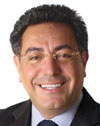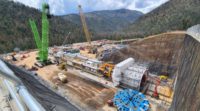Samir Brikho has been CEO since 2006 of U.K.-based AMEC plc, a leading global engineering and project management services provider to the oil and gas, energy, water and environmental sectors. A former CEO of ABB Lummus Global and a former senior manager at France’s Astom, Brikho was born in Lebanon and received advanced technical and business degrees In Sweden and the U.S. ENR Business Editors Debra K. Rubin and Gary Tulacz interviewed him on June 10 in New York City.

BRIKHO
How will the oil spill in the Gulf of Mexico affect your projects and work with BP?
AMEC is providing engineering services to BP to develop its Tubular Bells and Kodiak deepwater oil fields in the Gulf of Mexico under a contract awarded in 2009.
AMEC is evaluating several potential development options for selection of a preferred project option to advance into front-end engineering design (FEED), which provides an opportunity to influence overall cost, weight, schedule and facility performance at the early stages of the project.
The contract is AMEC’s first deepwater work to be executed under the global agreement with BP for offshore engineering and project management services and follows a 2008 contract award for support on the BP Clair offshore project in the UK North Sea. AMEC also has contributed to major BP projects in the Azeri, Chirag and Gunashli fields in the Caspian Sea.
There will be more regulation and more engineering needed. We don’t want a second Deepwater Horizon to occur. We have offered our services to BP, and we did not discuss money. Shell Oil has also given BP use of their local yards and facilities.
AMEC had 2009 revenue of more than $3.6 billion, but how has AMEC weathered the downturn?
We see our margins improving to 8.5% in 2010 and [backlog] is up 20% in the first half of the year to nearly $5.2 billion. AMEC currently earns 33% of its revenue from Canadian operations, but that provides 50% of our profit. UK operations are second in revenue generation, but are much less in terms of profit.
How is your workforce split between Europe and North America?
We have 11,000 people in North America, half of our total workforce.
How do you see your major markets?
We see our major businesses now in oil and gas, nuclear and alternative energy, water and environmental services. Who could have thought that nuclear power or wind farms would be part of the equation? That the cost of turbines make up only 50% of the cost for an offshore wind development project leaves more room for engineering services, which add value. Turbines for onshore projects make up 75% of total cost.
We are also investing in biomass production. I agree that it’s not a totally clean energy but everything is relative. It offers better efficiencies. Energy companies need to invest a larger proportion of their profits in alternative energy to foster real change.
What are AMEC’s target areas for acquisitions?
AMEC has $1 billion in cash to make acquisitions. Areas we are looking at include subsea engineering, underground mining, water, nuclear services, transmission and distribution consulting, and geographically in Australia and southern Asia, the middle East and Latin America.





Post a comment to this article
Report Abusive Comment